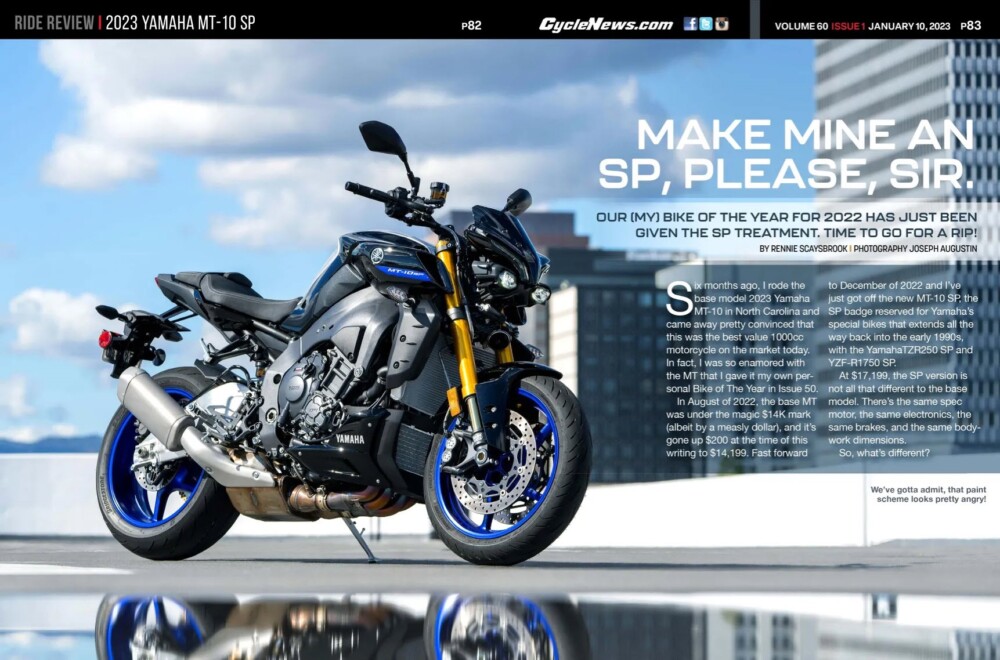Rennie Scaysbrook | January 11, 2023
Six months ago, I rode the base model 2023 Yamaha MT-10 in North Carolina and came away pretty convinced that this was the best-value 1000cc motorcycle on the market today. In fact, I was so enamored with the MT that I gave it my own personal Bike of The Year in Issue 50.
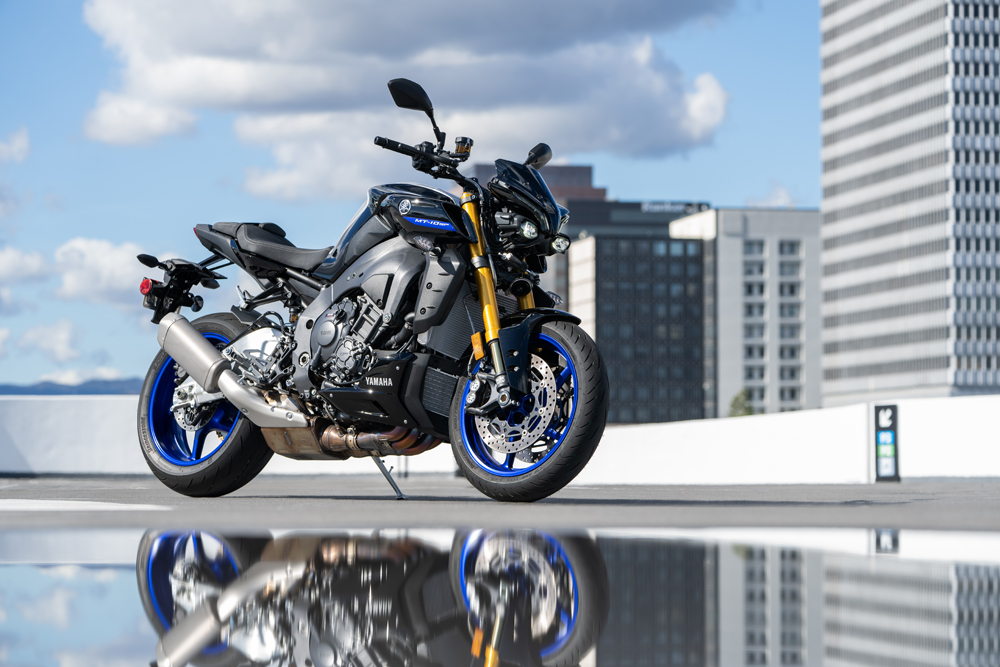 We’ve gotta admit, that paint scheme looks pretty angry!
We’ve gotta admit, that paint scheme looks pretty angry!
In August of 2022, the base MT was under the magic $14K mark (albeit by a measly dollar), and it’s gone up $200 at the time of this writing to $14,199. Fast forward to December of 2022 and I’ve just got off the new MT-10 SP, the SP badge reserved for Yamaha’s special bikes that extends all the way back into the early 1990s, with the TZR250 SP and YZF-750 SP.
At $17,199, the SP version is not all that different to the base model. There’s the same spec motor, the same electronics, the same brakes, and the same bodywork dimensions.
So, what’s different?
Although the same electronics in the six-axis IMU-controlled lean-sensitive traction control, slide control, wheelie control, engine-braking control, and brake control with lean-sensitive ABS abound, the suspension has been swapped out for Ӧhlins’ “next generation” semi-active electronic suspension with revised damping for both the 43mm fork and the shock.
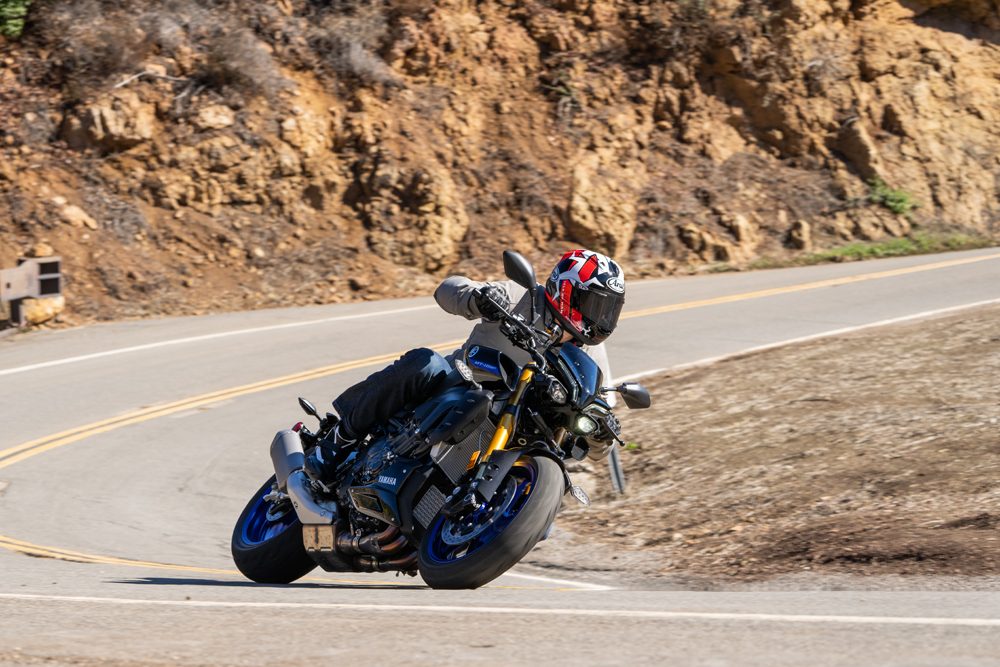 The Ӧhlins certainly aid in the MT SP’s agility.
The Ӧhlins certainly aid in the MT SP’s agility.
You’re also presented with steel-braided brake lines—which Yamaha hopes will somewhat cure the vague feel at the lever that the base model exudes—and you get the SP-specific Liquid Metal/Raven color scheme. Aside from that, the SP is exactly the same bike as its less-expensive brother.
Three grand more is a decent chunk of change when purchasing a motorcycle, so is the SP worth the cash? Yes, but it’s not that straightforward.
What I loved about the base model was how much tech was crammed into a package that, at the time, cost under (by a dollar, I know, I know) $14K. Given the fact that the base model now comes with all the electronics that the R1 had, including slide control—which everyone needs on a high-powered naked bike for no other reason than what my son says when he wants something: just “because”—along with that brilliant engine and pin-point chassis, it presented a very good argument for my Bike of The Year status.
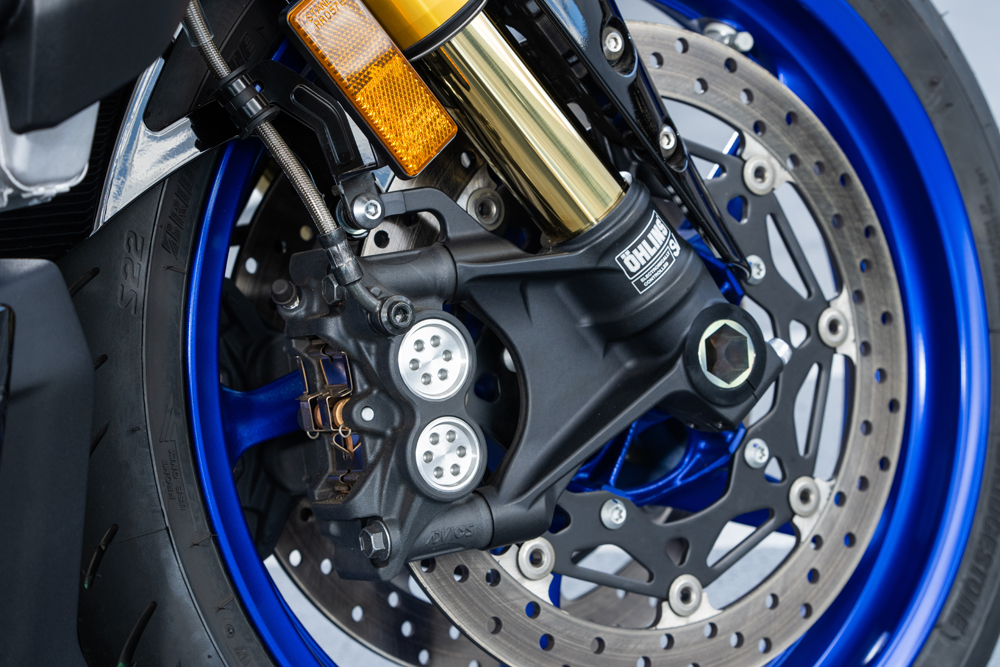 Semi-active suspenders add a touch of class to the MT.
Semi-active suspenders add a touch of class to the MT.
Switching over to the SP, the difference in ride quality between the Ӧhlins and the KYBs on the base model wasn’t as drastic as I had imagined. One of my big compliments I paid the base model was how well Yamaha got the KYB fork and shock sorted for most types of riding we encountered on the test. It handled the North Carolinian mountains with their stupendous winding roads—when not being deliberately blocked by small apexed rednecks refusing to get out of the way and let 15 motorbikes pass—extremely well. Commuting comfort was likewise well sorted, meaning whatever boxes in between were likely ticked, too.
The Ӧhlins on the SP do indeed provide better road holding than the KYBs, but unless you’re the picky type, I don’t think you’ll really need the extra adjustment offered by the system. That might sound like I’m bagging on the Ӧhlins and I promise you I’m not; it’s just that I am cheap and the KYBs on the base model are a massive improvement on suspenders from the same company a decade ago, when they really were considered second-rate to the Swedish units.
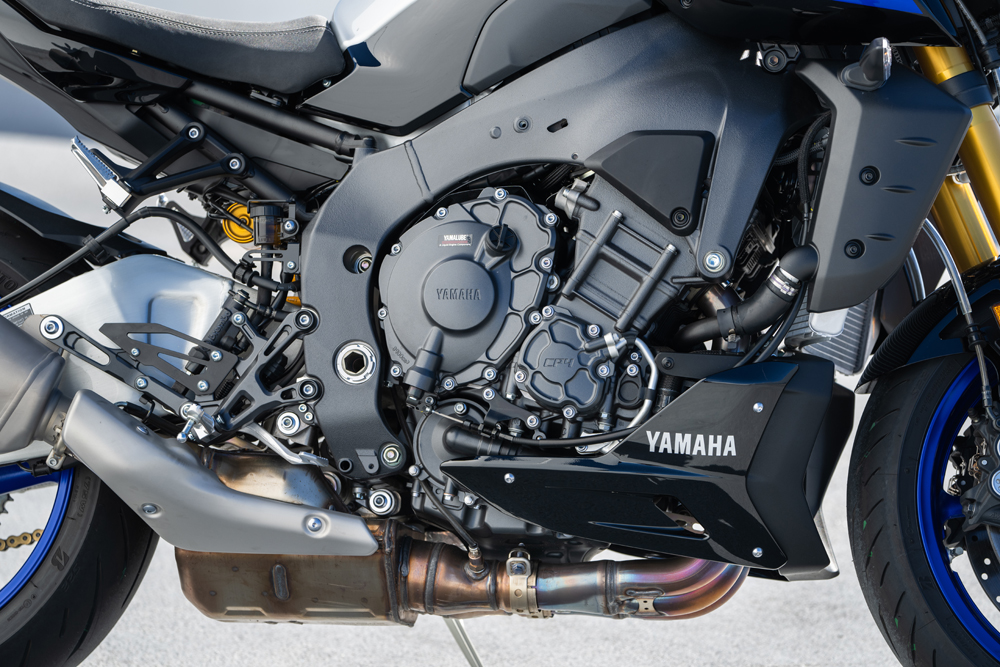 The engine and gearbox are exactly the same as the base MT, not that there’s anything wrong with that.
The engine and gearbox are exactly the same as the base MT, not that there’s anything wrong with that.
The Ӧhlins are superior in most areas of riding, but $3000 more superior? That, I’m not so sure of. They offer three stages of automatic damping (A1, A2, A3), each mode a slightly stiffer base level than the one before it, with compression and rebound damping automatically adjusted as you ride. Conversely, there are three manual modes of M1, M2, and M3, in which you can individually set your own electronic “clickers” and save them for future use—i.e., M3 is your softer street mode, M2 is your everyday mode, and M1 is your canyon/trackday mode.
Having that level of adjustability is part of the reason for the $3000 increase. How much of that you will actually use, that’s up to you. But, hey, it’s nice to have the convenience.
In practice, I will say the Ӧhlins (as expected) are very difficult to fault. I rarely used the manual modes, as that basically turned the bike into the KYB-shod unit with a fancy paint job, and settling on A2 for a bit more damping support—especially on our photoshoot on California’s Angeles Crest Highway—seemed the right level.
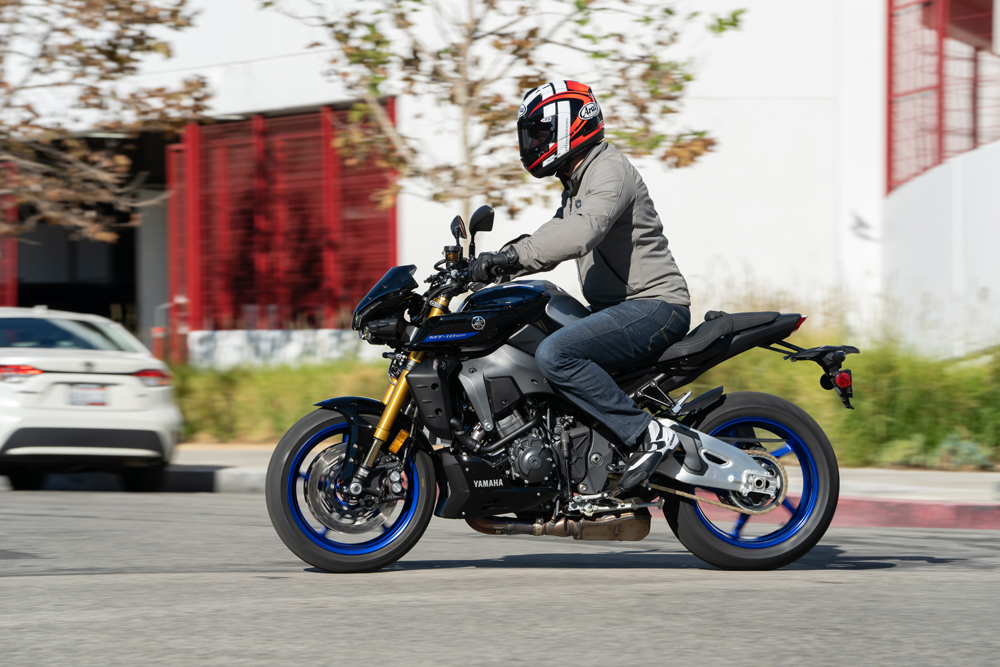 All day comfort on the MT is never an issue.
All day comfort on the MT is never an issue.
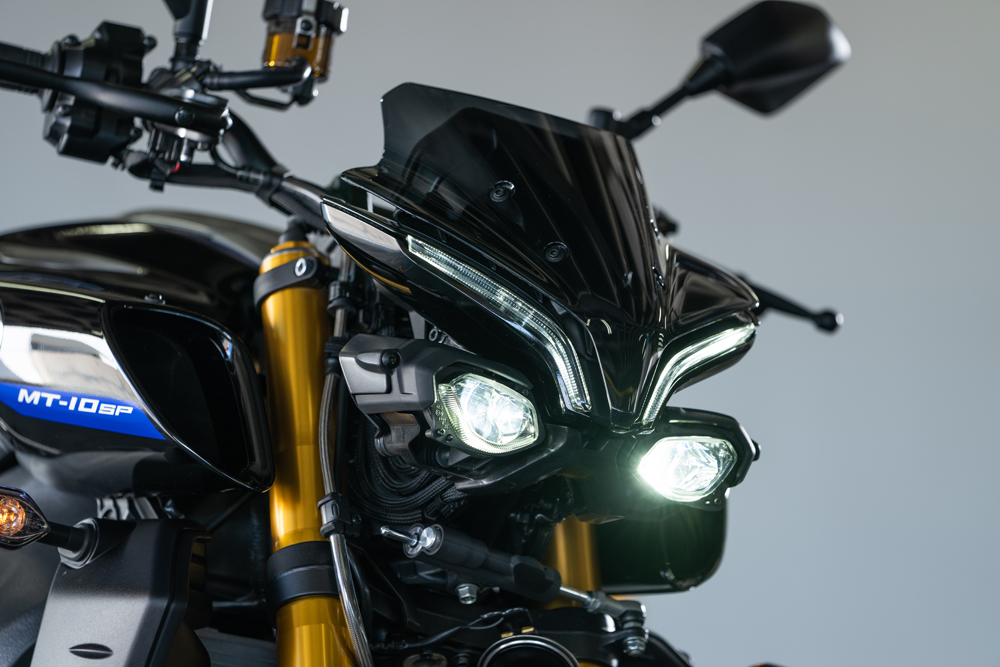 The jury is still out on whether the face is one only a mother could love.
The jury is still out on whether the face is one only a mother could love.
Braking stability and initial turn-in as you peel the front brake off is extremely good on the Ӧhlins SP, and the side-to-side agility that was present in the base model is definitely enhanced.
Pleasingly, the front brake now has more bite at the lever and reduces somewhat that vague and unsettling feeling the base model would exude after a hard session of twisties, so the steel braided lines have worked a treat here.
The SP is doubtless better looking than the admittedly Game Boy-ish colors of the base model. That Liquid Metal/Raven (isn’t that a cool name for a paint scheme?) colorway looks great during the day but looks even better under streetlamps at night as the artificial light rebounds off the little tank accents and the evil eye of the daytime-running light gives the bike a lairy look.
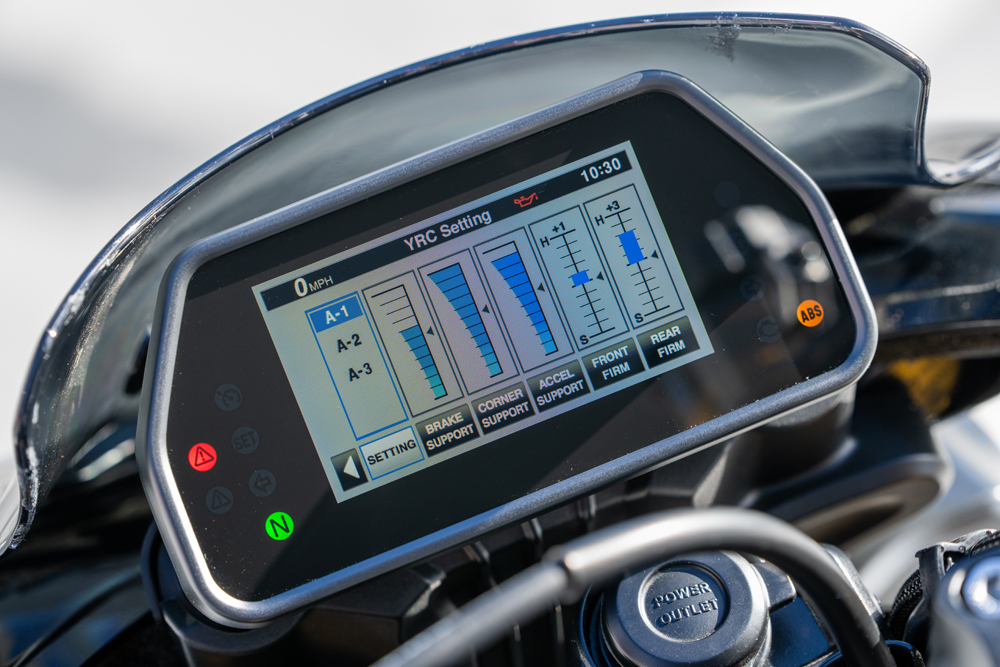 The MT now has the same level of rider aids as any other hypernaked bike on the market today.
The MT now has the same level of rider aids as any other hypernaked bike on the market today.
Like every bike, it’s important to know exactly what you want from your riding. The extra adjustment and capability of the Ӧhlins system will suit some, but I suspect the majority will be just fine with the KYB units. That opinion doesn’t take into account just how much better the SP looks when compared to the base model, or the extra satisfaction you get from looking at your bike and seeing that Ӧhlins sticker at the base of your fork and the gold shock, and the feelings of quality that the name brings.
So, if you like the bling, there’s only one option. Go for the SP. If you, however, aren’t fussed about the name on the suspension or the slightly improved road holding it brings, save yourself the extra $3K and grab the base model. CN
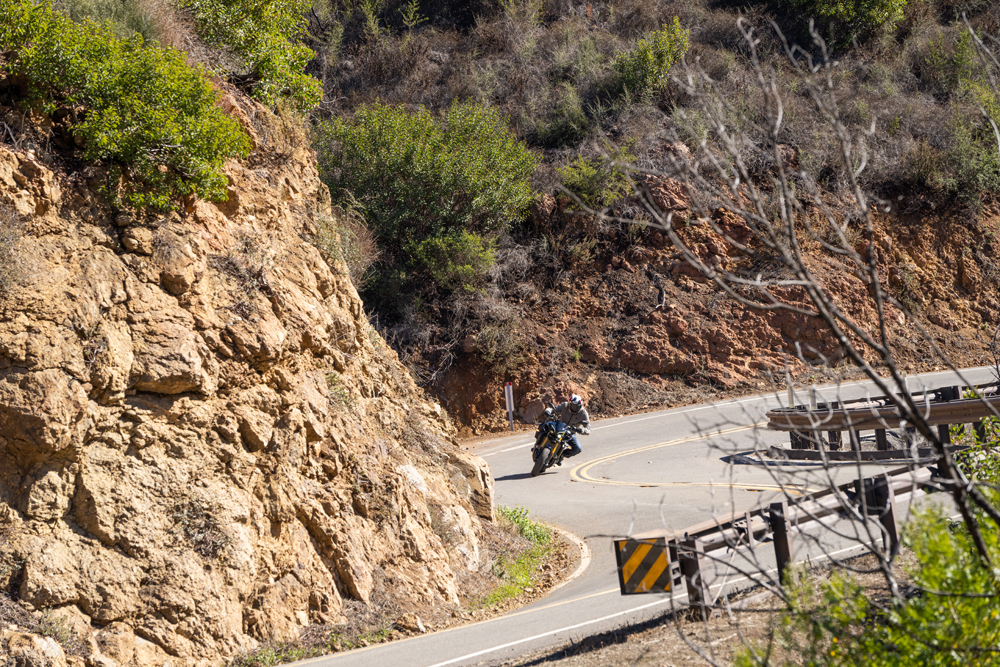 Get a twisty mountain road, stick it in A1 suspension, and you’re good to go.
Get a twisty mountain road, stick it in A1 suspension, and you’re good to go.
VIDEO | 2023 Yamaha MT-10 SP Review
*We made an error in this video when we stated the 2006 Yamaha YZF-R1 SP was the first SP-badged sportbike. This is very much not the case, the SP name extending back into the early 1990s with the TZR250 SP and YZF-750 SP. And it’s $3000 difference, not $4000 as I stated. Sorry, guys. It’s been a long year!**
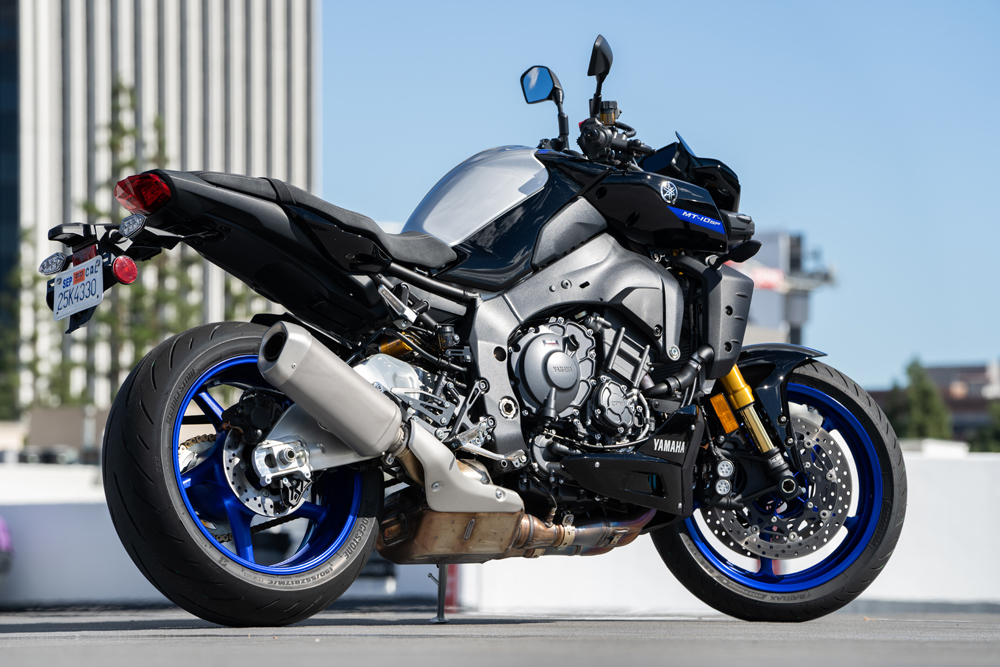
2023 Yamaha MT-10 SP Specifications
| MSRP: |
$17,199 |
| Engine: |
Inline, 4-cylinder |
| Displacement: |
999cc |
| Valvetrain: |
16-valve, DOHC |
| Cooling system: |
Liquid |
| Bore x stroke: |
79 x 50.9mm |
| Compression ratio: |
12.0:1 |
| Fuel system: |
Fuel injection with YCC-T |
| Exhaust: |
4-2-1 |
| Transmission: |
6-speed |
| Chassis: |
Aluminum twin-spar |
| Front suspension: |
Ӧhlins semi-active electronic suspension, 43mm fork, fully adjustable |
| Rear suspension: |
Ӧhlins semi-active electronic suspension, monoshock, fully adjustable |
| Front-wheel travel |
4.7 in. |
| Rear-wheel travel: |
4.7 in. |
| Front brake: |
Dual monobloc, 4-piston, radially mounted caliper, 320mm disc, cornering ABS |
| Rear brake: |
2-piston, fixed caliper, 220mm disc, cornering ABS |
| Front tire: |
120/70 ZR17 in. |
| Rear tire: |
190/55 ZR17 in. |
| Rake: |
24° |
| Trail: |
4.0 in. |
| Wheelbase: |
55.3 in |
| Seat height: |
32.9 in. |
| Fuel capacity: |
4.5 gal. |
| Weight (wet, claimed): |
472 lbs. |
| Color: |
Liquid Metal/Raven |
